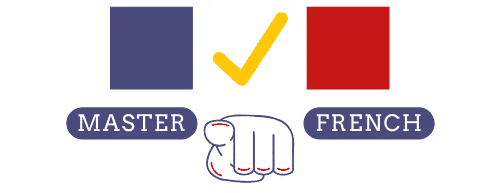The amazing power of intonation
Updated: 8 June, 2023 by Mylene in Pronunciation Lessons ▪
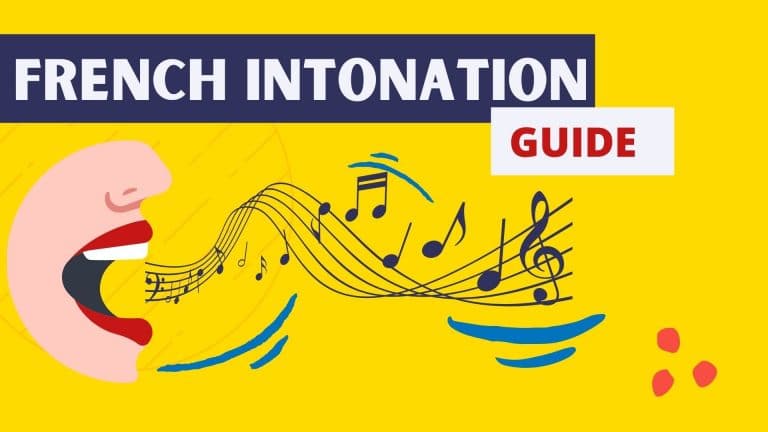
Different languages have different melodies. To speak French efficiently, you need to understand the melody of the French language. Melody is a very special kind of “glue” which holds the sounds together. Attempting to arrange the sounds with the wrong “glue” will result in structures of the wrong kind, which will be unintelligible.
Let’s imagine a communication between a native speaker and a French learner. The words, the grammar, the individual vowel and consonant sounds produced are all of acceptable quality, but the French speaker doesn’t understand what the French learner is saying. The problem is that the French learner’s speech is mostly unintelligible. He/She doesn’t use the melody and the patterns of the French language.
Each French speaker might interpret a sentence differently, but there are some basic rules for different types of sentences. To help you gain mastery of the French intonation, we’re going to address the following points:
- What is intonation?
- The main purposes of intonation
- Intonation: four main levels
- Declarative statements
- Yes-no questions
- Information questions
- Imperative sentences
- Stress and intonation
- How to learn the French intonation?
You’ll also find a list of audios to play with different intonation examples. If you’d like to know more about other topics related to pronunciation in French, you can connect with me on YouTube or Instagram.
What is intonation?
Intonation is produced essentially by vocal cord vibrations. It can be defined as the “melody” of language. Intonation means the pitch or tone of the speech. In French, each syllable has generally one tone.
One phonetic sound can have different sounds. For example, all /y/ sounds are not articulated in the same way within a word:
- Tu l’as bu ? (rising intonation)
- C’est un truc. (falling intonation)
This is due to two different things: 1) intonation and 2) phonetic environments.
So, even if you can pronounce a sound individually, it doesn’t mean you can pronounce the same sound within a sentence. You need the proper intonation to be understood.
To learn more, watch this video. Subscribe to my YouTube channel and follow me on Instagram. If you need to, activate French subtitles.
The main purposes of intonation
Processing sound is one of the most complex jobs that we ask our brain to do, as explained by neurobiologists. Regardless of the language, many studies show just how much importance the human brain assigns to hearing.
Here are the four essential purposes of intonation:
- Type of sentences: the choice of an intonation indicates to which category the sentence belongs: statement, question, exclamation or command. For example:
- statement: Vous allez venir avec moi.
- question: Vous allez venir avec moi?
- command: Vous allez venir avec moi!
- Organization of the sentence: is the sentence complete or incomplete?
- Focus: on which word you want to focus the attention. Example:
- C’est la recette que j’ai choisie (focus on la recette, compared to other recipes).
- C’est la recette que j’ai choisie (focus on j’ai).
- An expressive function: ironic, sad, happy … For example:
- Je suis d’accord (ironic)
- Je suis d’accord (happy)
- Je suis d’accord (sad)
The four main levels of intonation
Intonation levels can be used in many situations to show interest, express feelings, ask questions, or reveal attitude. There are essentially four different levels of intonation when communicating in French:
- Extra high: e.g. end of a question.
- High: e.g. exclamation.
- Medium: e.g. the starting point of a statement.
- Low: e.g. end of a declarative sentence.
As in a song, the voice hardly ever stops on a syllable. It slides throughout the four levels, more or less quickly, in imperceptible degrees.
For example, the sentence “il part demain” can be pronounced with three different intonations:
- Il part demain. : statement.
- Il part demain? : question.
- Il part demain! : order.
Intonation in French with declarative statements
French words coded with intonations and gestures can turn sentences into different meanings. Let’s start with sentences that neither ask a question nor express a command.
2 syllables
Tu peux. The utterance starts on a high note and ends on a lower one.

3 syllables
Tu peux faire. The pitch rises to a peak (“peux”) before falling to a lower level at the end of the group (“faire”).

More syllables
These statements consist of a series of rises in pitch, all of which attain approximately the same level. It is the last syllable that represents the peak.
Example: chez le fruitier on trouve des pommes et des oranges. (slow speech).
- Rises in pitch occur at fruitier, trouve and pommes.
- The voice drops at the end to show that the sentence is finished (“range“).
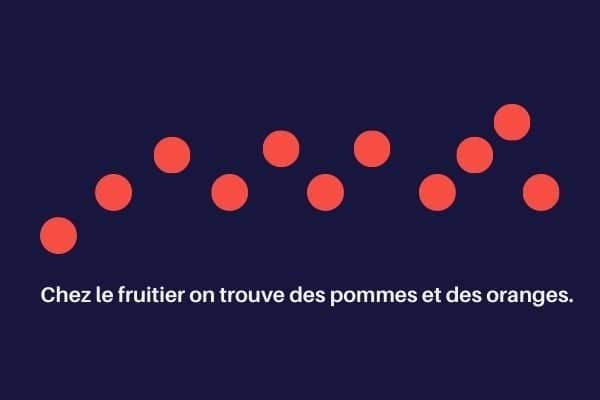
When we speak quickly, the rhythmic group and the intonation change. Let’s see the same example when we pronounce the sentence quickly.
Chez le fruitier on trouve des pommes et des oranges. (rapid speech).
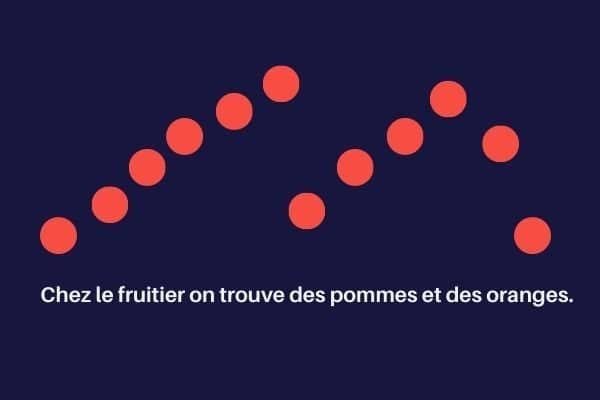
“Yes/no” questions in French
Questions which require an answer consisting of either “yes” or “no”.
Yes/no questions may be formed in different ways:
yes/no questions: informal
Yes/no questions are signaled by a sharp rise on the final syllable (“guette“). The declarative statement remains otherwise unchanged.
Listen to the difference:
- Tu as acheté un baguette (declarative statement). There are two rhythmic groups, “tu as acheté” and “une baguette”. As a declarative, the tone goes down at the end.

- Tu as acheté une baguette (question)? The intonation pattern moves up more sharply at the beginning, so the listener knows we’re going to be asking a question.
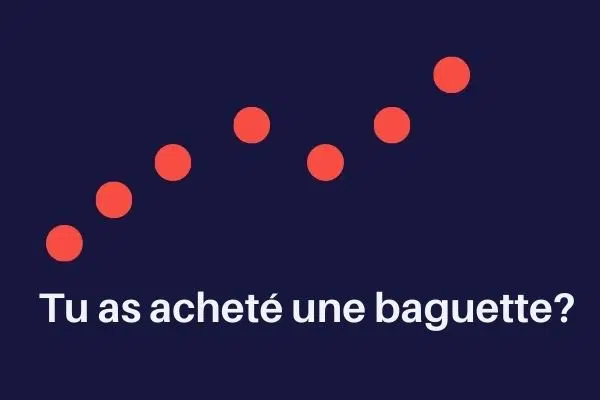
Questions starting with “Est-ce que”
The intonation is higher at the beginning, “est-ce que”, the rest of the statement remaining unchanged.
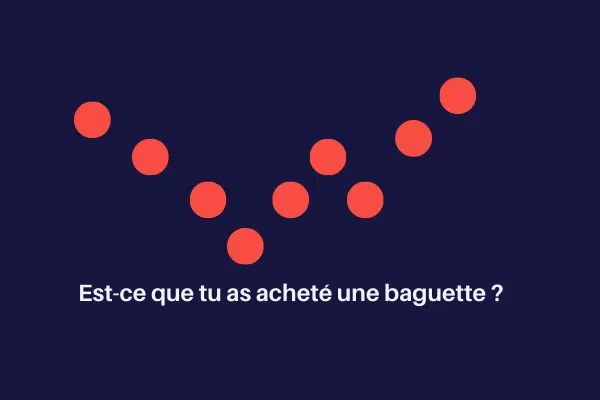
Formal questions
The subject pronoun and the verb are inverted. (Formal)
Example : as-tu acheté une baguette ?
The intonation is low at the beginning (“as”) and high at the end of the question (“guette”). The listener knows we’re going to ask a question because the verb comes first.
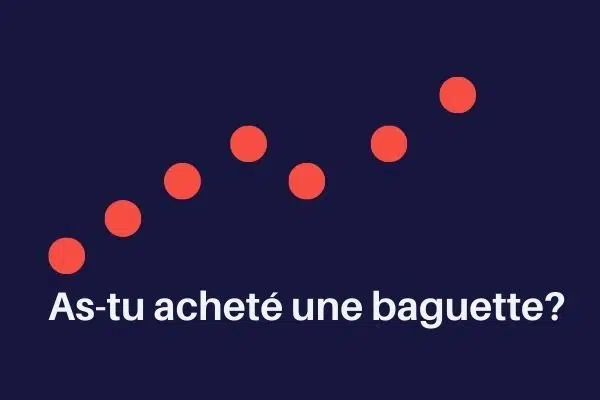
Intonation and information questions in French
These questions require an answer other than “yes” or “no”. These are called “information” questions.
Information questions begin with a high pitch on the question word (où, pourquoi, comment, etc.) and then gradually fall.
In a choice proposition, the structure of the intonation is symmetrical and gives a clue to the meaning of the connector, as in the following statements: “une pomme ou une orange?”.
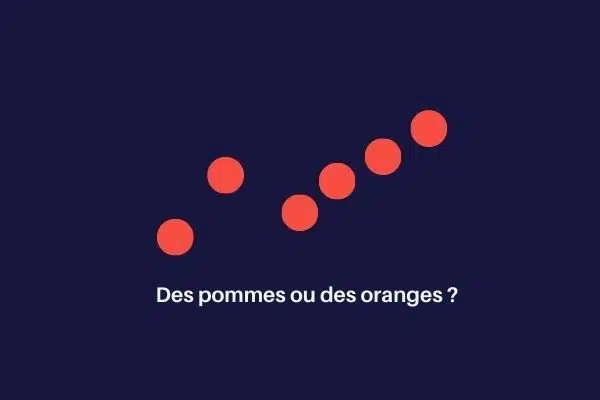
More than one rhythmic group
There is a high intonation at the beginning and at the end of the question. Each rhythmic group starts on a higher pitch (ex. “acheté”, “une baguette”) than the end of the preceding one (“une” is higher than the beginning of “acheté”).
Quand as-tu acheté un baguette?
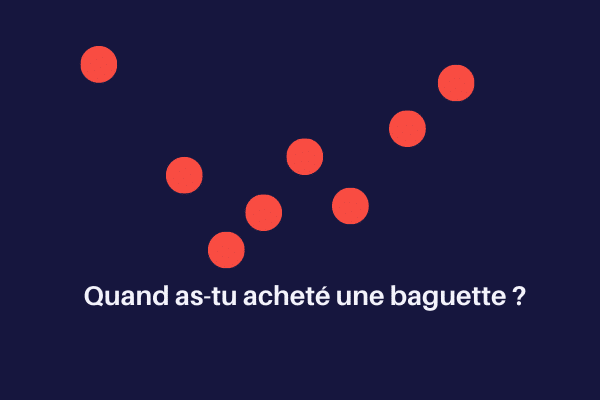
Intonation with imperative sentences in French
Imperative intonation is similar to exclamative intonation, that is, a sharp fall at the end.
One rhythmic group
For imperative phrases, the highest tone is at the start of the rhythm group (ex. “ne”). It goes down quickly until the end.
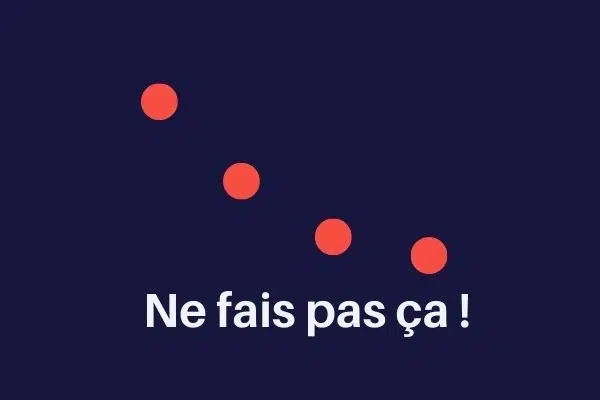
More rhythmic group
In the next rhythm group, the initial pitch is a little lower than the initial of the previous group.
Example: Allez lui dire de ne pas le faire!
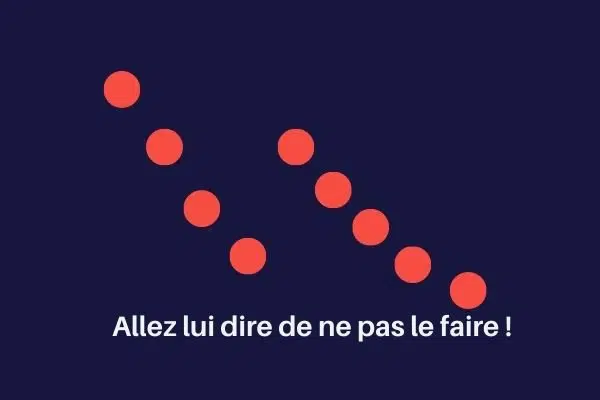
Stress and intonation
Please avoid confusing accentuation with intonation. Stress is when a syllable in a word is strengthened. The last syllable of a word is lengthened. Like intonation, phrase stress happens on the last syllable of the rhythm group. Therefore, the intonation and stress vary on the same syllable.
How to learn the French intonation?
It is much easier to learn elements that are relatively easy to define, for example, French vowel and consonant sounds. Often, learning the right intonation and rhythm seems to be an after-thought.
Taking private French lessons is a great way to address students’ “deafness” to the melody of a foreign language. You need to practice intensively the newly learned articulatory patterns to develop a “feel” for them and to be able to produce these sounds in the long term.
Thanks for reading!
If you’re learning French, sign up for the Master Your French email list, and we’ll send you the new posts right when they come out.
